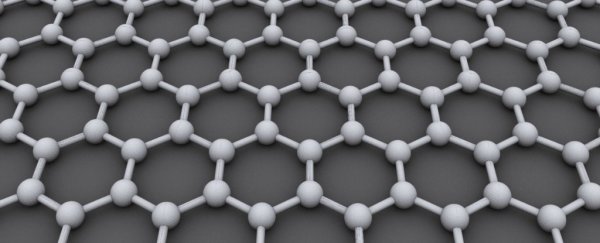A group of Australian researchers are pushing the limits of optical computers, creating some of the brightest quantum emitters ever recorded, and tuning them over a large spectral range.
Optical computers are devices that have the power to beam information at the speed of light, rather than relying on relatively slow electrons, and to perform calculations that are impossible using conventional processors.
But one of the main hurdles in creating functional optical computers is being able to control that light over a range of frequencies so that it can carry information – something that requires a tuneable quantum emitter.
By using a new material known as hexagonal boron nitride (hBN), the researchers have created a quantum emitter that can pump out a single, tuneable particle of light - a photon at a time, and is easy to engineer using conventional methods.
What exactly does this mean? Well hBN is a weird graphene-like mixture, only one atom thick, and made of a lattice of boron and nitrogen.
Until recently, it was only really used as a lubricant and in production of cosmetics, but researchers at the University of Technology Sydney (UTS) discovered last year that it could be used to emit quantised pulses of light.
"This material - layered hexagonal boron nitride - is rather unique," said one of the researchers, Mike Ford, at the time. "It is atomically thin and is traditionally used as a lubricant; however upon careful processing we discovered that it can emit quantised pulses of light - single photons that can carry information."
Now the same researchers have discovered some more interesting properties in hBN. Not only is it able to emit single photons of light, it's also able to emit different types of light.
"Remarkably, the emitters are extremely robust and withstand aggressive annealing treatments in oxidizing and reducing environments," the researchers write in their recent paper.
"Our results constitute a step toward deterministic engineering of single emitters in 2D materials and hold great promise for the use of defects in boron nitride as sources for quantum information processing and nanophotonics."
So how does a pulse of light work with quantum computing? In a traditional optical computer system, photons can be used to store information by being in either vertical or horizontal polarisation.
But they can also be turned into quantum bits (or qubits) by being put into superposition – a unique quantum state where they're in both vertical and horizontal polarisation at the same time. This has the potential to overhaul not only security, but also processing power.
"This discovery is a game changer in the field of single emitters," said photonic researcher Milos Toth, from UTS. "Currently, all encryption is breakable in principal but quantum cryptography is unbreakable – you would know immediately if someone was attempting to eavesdrop."
The researchers have also been looking at a second compound for emitting ultra-bright photons. In a collaboration with MIT, they've found that silicon carbide - a technologically mature platform commonly used as LEDs and detectors since the 1980s - was also a very bright quantum emitter.
Both of these technologies also work at room temperature, something that researchers have struggled to achieve in the past.
The researchers are hopeful that these discoveries will add to the growing body of work on quantum photonic technologies, bringing us closer to real-life optical computers.
"These discoveries can easily bring quantum photonic technologies on to a single chip and onwards to a commercial world," said one of the team, Igor Aharonovich.
The research on hBN has been published in ACS Nano, and the research into silicon carbide was published in Optica.
UTS Science is a sponsor of ScienceAlert. Find out more about their research.
